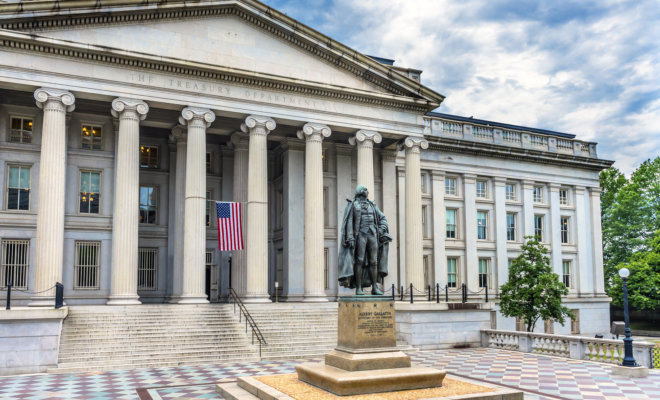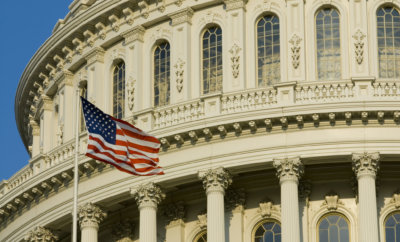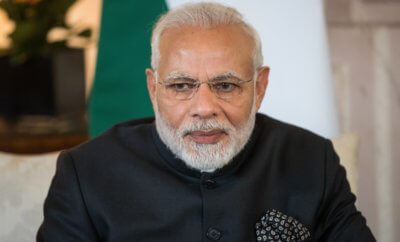Business
U.S. Adds India to Monitoring List Over Currency Practices

U.S. Treasury Department, Washington DC
Photo: Bigstock
The U.S. monitoring list comprises China, Japan, South Korea, Germany, Switzerland, and India.
The Donald Trump administration has added India in its list of nations whose foreign exchange and economic policies will be closely monitored by the United States.
The U.S. Department of Treasury has established a monitoring list of major trading partners that merit close attention to their currency practices and macroeconomic policies, it said in a report released on April 13. “In this report, the Monitoring List comprises China, Japan, South Korea, Germany, Switzerland, and India, the latter being added to the monitoring list in this report,” the report stated.
“We will continue to monitor and combat unfair currency practices, while encouraging policies and reforms to address large trade imbalances,” U.S. Treasury Secretary Steven Mnuchin said in a statement. The treasury department is working vigorously to ensure that trade is free, fair, and reciprocal so American workers and companies can compete and succeed globally, he added.
The Congress requires the report in order to recognize countries that are attempting to artificially manage the value of their currency so that they can gain a trade advantage, for instance, by maintaining a low exchange rate to promote cheaper exports, according to AFP.
The report said that India increased its purchases of foreign exchange over the first three quarters of 2017. “Despite a sharp drop-off in purchases in the fourth quarter, net annual purchases of foreign exchange reached $56 billion in 2017, equivalent to 2.2 percent of GDP,” it added.
The report also said that given that Indian foreign exchange reserves are ample by common metrics and that India maintains some controls on both inbound and outbound flows of private capital, further reserve accumulation does not appear necessary.
“The administration remains deeply concerned by the significant trade imbalances in the global economy and is working actively across a broad range of areas to help ensure that trade expands in a way that is fair and reciprocal,” the report pointed out. Once a nation is on the monitoring list, the economy will remain there for at least two consecutive reports to help monitor the performance of the economy. No major U.S. trading partner met the standards for currency manipulation in the second half of 2017.
The report said that China has an extremely large and persistent bilateral trade surplus with the United States, by far the largest among any of America’s major trading partners. China’s economic development is going in an increasingly non-market direction, it said.
“Over 2017, the Chinese currency generally moved against the dollar in a direction that should, all else equal, help reduce China’s trade surplus with the United States,” the report added.




You must be logged in to post a comment Login